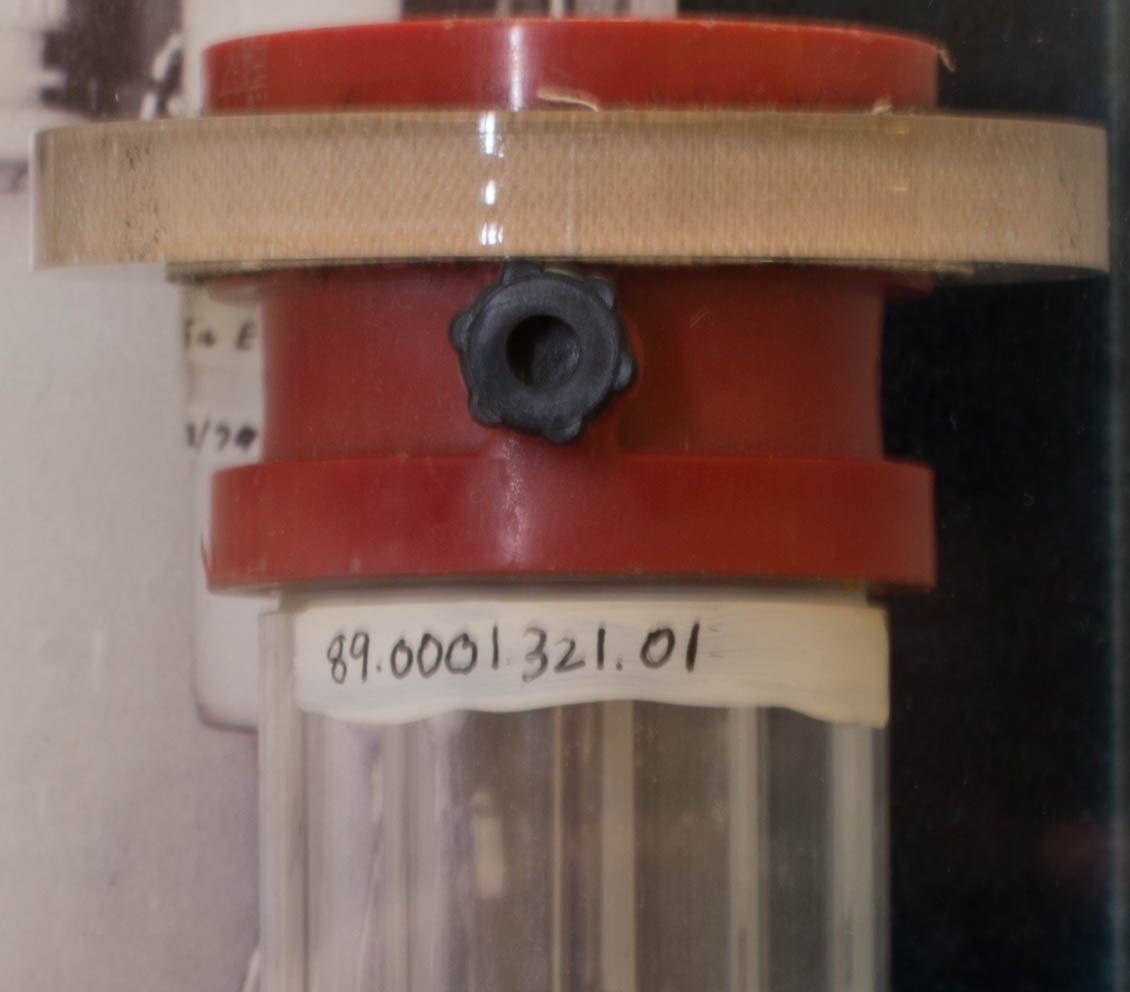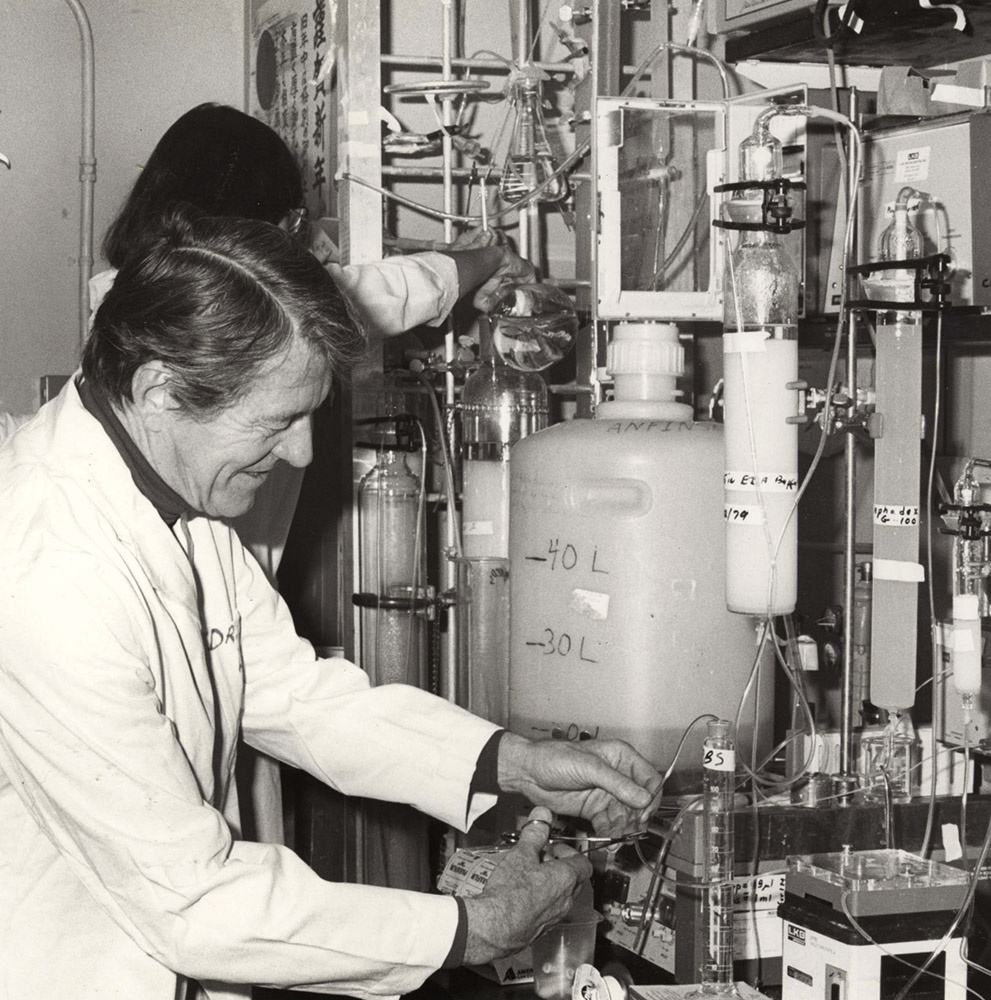Pharmacia Fine Chemicals Chromatography Column, c. 1975
Unknown donor, Accession 89.0001.321
This chromatography column from Pharmacia Fine Chemicals is one kind used in Anfinsen’s laboratory for affinity chromatography, a method that he began using in the 1960s to purify samples of the protein Staphylococcal nuclease, which enabled him to pinpoint the exact positions of the 149 individual amino acid units and their peptide bonds.
Other types of chromatography separate molecules based on size, differences in chemical or physical interactions, or strength of their ionic interactions. In affinity chromatography, a molecule called a “ligand” that binds to a specific receptor, is anchored to solid support. When a solution is passed over it, the ligand binds to the specific molecule that has an “affinity,” or natural bond, with it. After the other components of the solution are washed away, the now purified molecule is stripped from its support.
The 1979 Pharmacia Fine Chemicals’ booklet, Affinity Chromatography: Principles and Methods, explains, “Affinity chromatography occupies a unique place in separation technology since it is the only technique which enables purification of almost any biomolecule on the basis of its biological function or individual chemical structure. Although the technique became routinely available little more than ten years ago, its application has developed so rapidly that it is now used in almost every laboratory concerned with the purification of biological substances. The widespread adoption of affinity chromatography in such a short time reflects its success in achieving rapid separations which are time-consuming, difficult or even impossible using more conventional techniques.” Read the booklet
In 1974, Anfinsen used affinity chromatography to isolate and purify interferon, a protein which interferes with virus replication, so that large quantities could be synthesized for study. Five years later, his group had determined interferon’s amino acid structure, an accomplishment which allowed the development of interferon as a treatment for various conditions such as multiple sclerosis, hepatitis C, leukemia, and some cancers.
Read the 1980 Annals of the New York Academy of Sciences article his group published about this research.
Chromatron electronic control device.
Close-up front view of Chromatography Column
Dr. Anfinsen using a different model in the lab, a Sephedex brand column for affinity chromatography.U.S. Library of Medicine, courtesy of Libby Anfinsen
This artifact is featured in Protein Structure and Synthesis: The Road to the Nobel Prize.
Chromatography ColumnFrom the permanent collection of the NIH Stetten Museum, courtesy of Dr. Christian Anfinsen





